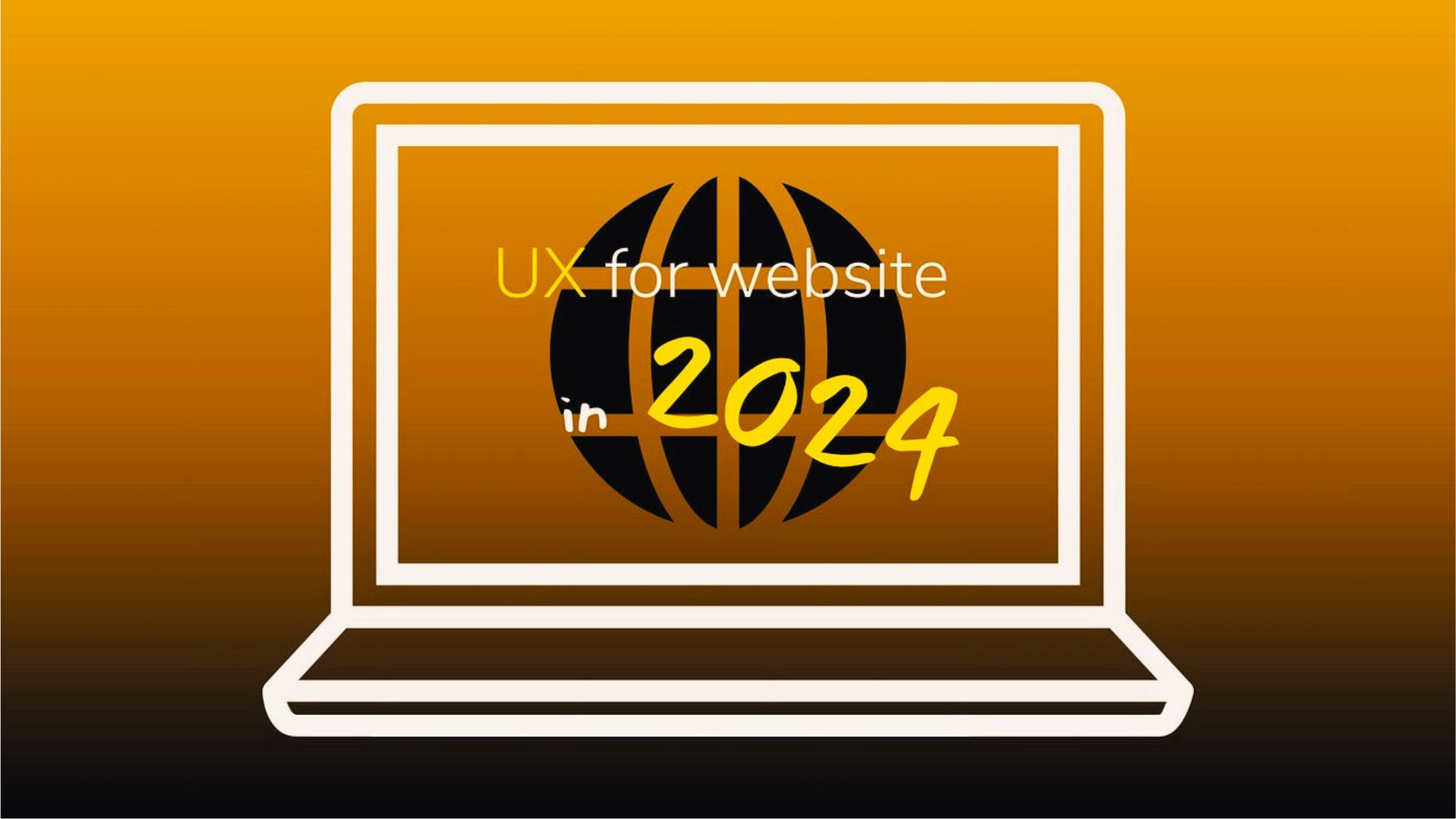In 2024, as technology and human needs collide, lots of companies are figuring out where they stand. Not everyone is ready for what's coming down the road.
Knowing why User Experience (UX) matters is a big deal for any business. It's not just a trendy word; it's like a map showing how tech and people will connect. Right now, getting on board with the importance of UX isn't something you can choose to do or not – it's a must if you want to stick around and do well in the future.
What is User Experience (UX)?
When we talk about user experience, we're not just talking about how things look on your screen – it's a complete journey. This journey involves understanding deeply what users go through. Think of it like an adventure, with research and testing as crucial tools to figure out how to make things better for them.
Let's stress this point – user experience (UX) is a big deal because it's all about connecting with your users. It's not just about making educated guesses; it's about diving into the numbers and understanding their feelings to figure out what works and what doesn't. So, why does UX matter? That's the question that invites us to take a closer look, exploring the essence of how it shapes the relationship between technology and the people who use it.
Why is UX Design Important?
User experience (UX) is a big deal for businesses because it's becoming increasingly vital. It's like the secret ingredient that shapes how customers connect with and trust a brand and its products.
Imagine this – the way things look and function on websites or apps is transforming. This transformation directly impacts how people engage with them. Moreover, new technologies are influencing how users act. Here's where the importance of UX comes into play – it's the guide that helps businesses navigate these changes, keeping them ahead and profitable.
The internet is experiencing another significant shift in how we conduct business. User experience design is stealing the spotlight, swiftly becoming the new norm.
You can already witness the influence of UX growing as more companies adopt design principles that prioritize humans.
If you're curious about why user experience holds such significance or how UI/UX design services can benefit your business, Duck Design is here to lend a helping hand.
Discover What's New: User-Friendly Trends in 2024 UX
As we embrace a new era of technology and innovation, User Experience (UX) takes center stage as a vital force driving progress worldwide.
The growing popularity of the UX design process highlights a strong focus on creating new and improved interfaces for a variety of applications. Whether it's enhancing the user experience in sales, revolutionizing education interfaces, or implementing extensive updates in government agencies across the country, the impact is significant.
For those pondering the importance of UX, let's delve into the ongoing trends and innovations that are shaping the UX landscape in 2024.
Key Trends in UX Design
In 2024, there's a clear focus on giving importance to responsive design and accessibility. It's not just about simplifying things for users; it's a deliberate move to meet new and existing regulations, ensuring everything complies.
Look out for changes in digital interfaces with the increasing popularity of microtransactions and the widespread use of dark mode. These adjustments aim to make users happier and offer them more control. By embracing these ongoing trends, you'll truly feel the significant influence of User Experience (UX) on your interaction with digital platforms.
The Role of New Technologies
Exciting shifts are taking place in technology, ushering in more interactive experiences in products and services. Virtual Reality (VR) and Augmented Reality (AR) are becoming increasingly familiar, bringing a fresh and engaging dimension for customers.
Voice User Interface (VUI) and Communication UX are gaining traction, especially with the growing use of voice-activated services and web applications.
Transformative technologies like Machine Learning and Artificial Intelligence are fundamentally changing the landscape of marketing and design. While these innovations offer new ways for service providers and users to connect, the fast pace of progress poses a challenge.
This emphasizes how swiftly groundbreaking technology evolves, underscoring the importance of staying ahead with the most intuitive processes to effectively navigate these changes.
The Power of Personalization in UX
The ability to personalize digital interactions based on personal preferences, habits, and needs greatly improves the entire user journey.
Personalized UX designs, driven by data and user insights, strive to create a more captivating and individualized user experience.
It's important to realize that as more options for personalization become available, users start to anticipate them, resulting in heightened engagement. Personalization goes beyond visual interfaces; it expands to include the Internet of Things and even voice services.
UX and Business Goals
UX designers are pivotal in achieving business goals and developing strategies that can be measured and enhanced.
The impact of having a skilled UX designer versus not having one is comparable to randomly tossing noodles at the wall versus following processes that yield tangible and measurable results.
Reputable responsive web design companies recognize the significance of user experience design. They understand that creating seamless experiences across all platforms and devices enhances user engagement and fosters user trust, leading to additional benefits.
Always remember: User Trust equals Loyalty.
In many markets, it's the returning customers that offer the best Return on Investment (ROI). User experience design shines in this realm, providing valuable metrics and quantitative data essential for navigating highly competitive spaces.
The Importance of Personalization in Future User Experiences (UX)
Creating a personal touch is the secret ingredient for crafting exceptional User-Centered Design. AI and Machine Learning will be major players, empowering UX designers to gather and analyze heaps of data for crafting highly relevant and personalized experiences. Thanks to AI in UX, designers can provide content and interfaces that adapt in real time to each user's unique preferences and needs.
Designers will focus on building customer experiences that truly understand their user personas, considering language preferences and accessibility needs. The objective is to ensure every real user feels recognized and valued. UX designers will give even more weight to user-centric design, ensuring that the desires and needs of users guide their design process. This transformation involves involving users in the design journey through testing and feedback loops, ensuring the final digital product is user-friendly, inclusive, and enjoyable.
Furthermore, user-centric design will prioritize inclusivity, ensuring digital experiences are accessible to everyone, regardless of abilities. UX designers will work closely with accessibility experts to create interfaces catering to various needs, such as screen readers for those with visual impairments or keyboard navigation for people with motor disabilities. Embracing user-centric design results in products that cater to individual needs and foster a sense of connection and belonging. Personalization is no longer just a nice addition; it's a crucial aspect of delivering a positive User Experience!
The Challenges and Opportunities in UX Design
In the realm of UX design, striking the right balance between keeping users satisfied and achieving business goals poses a significant challenge. UX designers must craft user-friendly experiences that not only drive conversions but also contribute to boosting business revenue. Aligning business objectives with user-centric visual design principles becomes crucial to ensure that user experiences are both profitable and enjoyable.
Comprehending user journeys demands in-depth research and analysis. Designers need to engage in user interviews, surveys, and usability testing to unveil insights into user preferences and pain points. By delving into user psychology, designers can shape experiences that resonate deeply with their target audience.
Overcoming technological limitations stands out as another challenge. UX designers must stay abreast of the latest tools and techniques to create seamless and user-friendly experiences as technology advances. Adapting methodologies and workflows to accommodate new technologies becomes essential, ensuring that designs are not only innovative but also practical.
Amidst these challenges, numerous opportunities abound in UX design. With the widespread use of mobile devices and the Internet of Things (IoT), designers can seamlessly integrate experiences with these technologies. They can design intuitive mobile apps and user interfaces for smart devices, enhancing the overall User Experience.
Similarly, UX and Product Designers can harness the power of data and analytics to optimize their designs. Analyzing user behavior and feedback empowers them to identify areas for improvement and make data-driven design decisions. This iterative process allows for the continuous refinement of User Experience Design. Collaboration with other disciplines, like Front-End Development, becomes vital to creating cohesive and visually appealing experiences. For more information contact us now!




Comments (0)